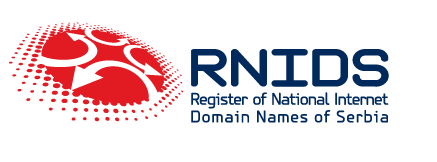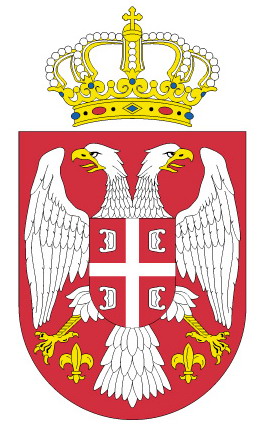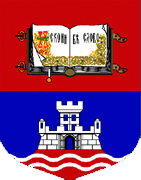Brief Conference Program
Saturday, June 23
| 19:00-20:30 | Registration - next to the reception |
|---|
Sunday, June 24
| 7:15-18:00 | Registration - next to the reception |
|---|---|
| 8:00-10:45 | Tutorial 1: Evolution of Ethernet from Spanning Tree to TRILL, and other Interesting Fabric Issues, Radia Perlman (invited) |
| 11:00-14:00 | Tutorial 2: Providing Security in Routing Infrastructures, Charlie Kaufman (invited) |
| 14:20-19:00 | Lunch in "Stara koliba" and tour of Belgrade - Bus waits in front of Hotel Balkan |
| 20:00 | Welcome reception in "Klub književnika" |
Monday, June 25
| 7:30-18:00 | Registration - next to the reception |
|---|---|
| 8:30-9:00 | Opening Session |
| 9:00-9:45 | Keynote speech: Folklore of Protocol Design, Radia Perlman (invited) |
| 10:00-12:00 | Best Paper Candidates |
| 12:00-13:30 | Lunch |
| 13:30-15:20 | Switch Architecture |
| 15:40-16:45 | Lookup |
| 17:00-17:30 | Invited talk: Trends in Switching and Routing: Operator's Perspective, Igor Milojević |
| 19:30-22:00 | Boat tour (dinner needs to be reserved at the registration desk, not included) - Meeting in front of Hotel Balkan |
Tuesday, June 26
| 8:00-18:00 | Registration - next to the reception |
|---|---|
| 8:30-10:00 | Routing |
| 10:20-12:10 | Topologies |
| 12:10-13:40 | Lunch |
| 13:40-15:30 | Quality of Service |
| 15:50-18:00 | Optical Networking |
| 18:10-18:40 | Meeting of the IEEE HPSR Advisory Board |
| 20:00 | Banquet in Skadarlija, in the restaurant "Dva jelena" |
Wednesday, June 27
| 8:00-14:00 | Registration - next to the reception |
|---|---|
| 8:30-9:40 | Flow Switching |
| 9:55-11:55 | Panel: The Future of Datacenter Networks |
| 11:55-13:00 | Lunch |
| 13:00-14:30 | Energy Savings |
| 14:50-22:00 | Tour of Šumadija and banquet in the winery Vrbica - Bus waits in front of Hotel Balkan |
Detailed Conference Program
Sunday, June 24
8:00 - 10:45
Tutorial 1: Evolution of Ethernet from Spanning Tree to TRILL, and other Interesting Fabric Issues
Abstract: In the OSI Reference Model for networking, routing is a function of layer 3. Layer 2 is supposed to deliver a packet across a shared medium to a neighbor. What does it mean to be doing routing in layer 2 vs layer 3? In fact, the only way to understand this, is to understand the historical background about how these technologies evolved. This tutorial explains the spanning tree algorithm, why it was invented, its limitations, and why the world still wants large multi-link Ethernets. Why don't we just replace Ethernet today with IP? We will explain the limitations of IP as a layer 3 protocol, as well as why these limitations are idiosyncrasies of IP rather than intrinsic properties of layer 3. We then describe why TRILL can provide the ease of management of Ethernet with all the functionality of layer 3 routing. We describe link state routing, and the details of IS-IS, upon which TRILL is based. And we compare TRILL with some alternative approaches to data center interconnection that have been recently proposed. We will discuss generic fabric issues such as the pros and cons and hows of hierarchical vs flat addresses, keeping packets for a particular flow in order, allowing large packets, providing backpressure to avoid congestion loss, central vs distributed forwarding table calculation, and how various buzzwords that have popped up recently such as OpenFlow fit into the picture.
Speaker: Radia Perlman (slides, video: part1, part2, part3) is a Fellow at Intel Labs, USA. She designed scalable and robust link state routing, and specifically, the IS-IS routing protocol in use in many ISPs, and from which the OSPF protocol was derived. She also designed the spanning tree algorithm which has been the backbone of Ethernet for decades, and TRILL, the IETF standard that creates a much better Ethernet. She is the author of the textbook "Interconnections" and coauthor of the textbook "Network Security". She holds over 100 patents, a PhD from MIT, and awards such as the Usenix lifetime achievent award, the Sigcomm lifetime achievement award, and an honorary doctorate from KTH.
11:00 - 14:00
Tutorial 2: Providing Security in Routing Infrastructures
Abstract: Security challenges are appearing in every aspect of computing, and today customers need and expect security functionality to be embedded in their networking fabric. This tutorial describes the security features commonly found in networking components today and discusses some challenges for which we still need solutions. How can a public cloud offer guaranteed isolation between distrustful tenants, not only to prevent data leakage or corruption, but to guarantee that a DDoS attack against, or malfunction of one tenant not affect other tenants? What kinds of denial of service attacks are seen in real deployments and what types of mitigations are possible? What are the tradeoffs of terminating security associations within the infrastructure vs. at the endpoints? Routing protocols were designed to allow autoconfiguration, and assumed all routers were trustworthy. Why did misconfiguration of a single BGP router cause global consequences, and what sorts of security mitigations can make BGP avoid such problems at reasonable cost? Note that even if a routing protocol is working correctly, it does not guarantee that routers will forward packets correctly. What kind of routing architecture can guarantee that A and B can communicate, with a reasonable share of bandwidth, even if there are malicious routers giving false information in the routing messages, or flooding the network with garbage traffic, or maliciously discarding traffic from one source? This tutorial will cover a quick introduction to general security concepts such as public key vs secret key cryptography so that no prior security background is needed, and then focus on network-infrastructure-related security issues, along with opportunities for research.
Speaker: Charlie Kaufman (slides, video: part1, part2) is Security Architect (USA) for Windows Azure, Microsoft's Cloud Computing offering, and is responsible for designing mechanisms to protect Windows Azure both from network-based attacks coming from the Internet and from customer launched attacks from VMs being hosted by Windows Azure. Previously he was a member of the Windows Core Architecture group designing security enhancements for Windows in the areas of authentication, authorization, integrity protection, network security, system management, and user interfaces. He was a major contributor to IETF standards efforts designing DNSSEC and IPsec, and is co-author of the textbook: "Network Security: Private Communication in a Public World". He served on the National Academy of Sciences expert panel that wrote the book: "Trust in Cyberspace". He holds over 40 patents in the fields of computer security and computer networking.
Monday, June 25
8:30 - 9:00
Opening Session
9:00 - 9:45
Keynote speech: Folklore of Protocol Design
Speaker: Radia Perlman, Intel, USA
10:00 - 12:00
Best Paper Candidates
Session Chair: Prof. Hussein Mouftah, University of Ottawa, Canada
- StrideBV: Single Chip 400G+ Packet Classification
- Partition/Aggregate in Commodity 10G Ethernet Software-Defined Networking
- A Simple IP Fast Reroute Scheme for Full Coverage
- MPLS Implementation for the Linux Kernel
13:30 - 15:20
Switch Architecture
Session Chair: Prof. Igor Radusinović, University of Montenegro, Montenegro
- Design of a Shared Memory Carrier Ethernet Switch Compliant to Provider Backbone Bridging-Traffic Engineering (IEEE802.1Qay)
- Module-Level Matching Algorithms for MSM Clos-Network Switches
- A Practical and Scalable Congestion Control Scheme for High-Performance Multi-Stage Buffered Switches
- Improving Performance in a Combined Router/Server
- Integration of Look-Ahead Multicast and Unicast Scheduling for Input-Queued Cell Switches
15:40 - 16:45
Lookup
Session Chair: Prof. Jonathan Chao, Polytechnic University of NYU, USA
- Updating Designed for Fast IP Lookup
- Large-scale Multi-flow Regular Expression Matching on FPGA
- LightFlow: Speeding Up GPU-based Flow Switching and Facilitating Maintenance of Flow Table
17:00 - 17:30
Invited talk: Trends in Switching and Routing: Operator's Perspective
Abstract: Implementing the mobile backhaul along with the existing fixed-services oriented IP network brings many challenges for operators. These challenges especially arise when it comes to implementing a converged physical topology and routing design that need to accomodate all types of traffic and services, both fixed and mobile, and still hold a cost effective way of expanding the network. Having that in mind, we set some demands towards this “converged“ network. What physical topology and routing choices can help support the continuous growth of public Internet traffic? How do we deal with residential Internet, lack of IPv4 addresses and introducing IPv6? What is the cost-effective way of physically expanding the network, especially when attaching a large number of mobile base stations around the country together with the fixed access nodes? What physical and routing design and hierarchy do we choose? What kind of boxes are suitable? All these questions have driven Telekom Srbija’s design choices for implementing the mobile backhaul onto the existing IP network. In this presentation we will share our experience and design decisions on this theme.
Speaker: Igor Milojević (slides) is the Head of Service Architecture Engineering at Telekom Srbija. He is responsible for the overal technical and operational network design, as well as for the design of individual services. The area of work covers residential, business and wholesale services for IP data, voice and multimedia in both fixed and mobile domain. He started his career at Telekom Srbija as a Broadband Network Engineer, later holding the positions of System Engineer and Head of IP/MPLS Engineering. Besides Serbia, he also worked on large network and service design and implemetation projects in Montenegro and Bosnia. His major projects include Telekom Srbija’s IP/MPLS network design, mobile backhaul solutions, IP and mobile QoS, IMS and IPTV implementations and services, Telekom Srbija’a mobile backhaul strategy and others. Igor holds a Master Degree in Telecommunications from the School of Electrical Engineering of Belgrade University.
Tuesday, June 26
8:30 - 10:00
Routing
Session Chair: Prof. Achille Pattavina, Politecnico di Milano, Italy
- Large MTUs and Internet Performance
- Single Node Protection Without Bouncing in IP Networks
- Probing-Based Two-Hop Relay with Limited Packet Redundancy
- Comparison of Machine Learning Models for Classification of BGP Anomalies
10:20 - 12:10
Topologies
Session Chair: Prof. Wojciech Kabacinski, Technical University of Poznan, Poland
- Peer-to-Peer Real-Time Group Communication Over Content-Centric Network
- Performance Implications of Deadlock Avoidance Techniques in Torus Networks
- Assessing Physical Network Vulnerability Under Random Line-Segment Failure Model
- On Stability of Virtual Topologies in Dynamic Multilayer Networks
- On Forwarding State Control in VPN Multicast Based on MPLS Multipoint LSPs
13:40 - 15:30
Quality of Service
Session Chair: Prof. Xiaohong Jiang, Future University-Hakodate, Japan
- A Hybrid Network Traffic Engineering System
- Classes of Service for Daisy Chain Interconnects
- Fair Packet Dropping
- Scalable Per-flow Resource Management for Large Hierarchical Networks
- Statistical Approach for Detecting Malicious PCE Activity in Multi-domain Networks
15:50 - 18:00
Optical Networking
Session Chair: Prof. Naoaki Yamanaka, Keio University, Japan
- Dynamic Pump-Wavelength Selection for Optical Packet Switch with Recursive Parametric Wavelength Conversion
- Dynamic Routing and Resource Allocation in Time-Driven-Switched Optical Networks
- Cost-Optimized Dimensioning of Translucent WDM Networks with Mixed-Line-Rate Spectrum-Flexible Channels
- Monitoring Trail Allocation in All-Optical Networks with the Random Next Hop Policy
- Multidimensional Elastic Routing for Next Generation Optical Networks
- Optical Transport Network Design with Collocated Regeneration and Differential Delay Compensation
18:10 - 18:40
Meeting of the IEEE HPSR Advisory Board - Open to all participants
Wednesday, June 27
8:30 - 9:40
Flow Switching
Session Chair: Dr. Cyriel Minkenberg, IBM Research, Switzerland
- Multiple Service Load-Balancing with OpenFlow
- ORAN: OpenFlow Routers for Academic Networks
- RSTP-SP: Shortest Path Extensions to RSTP
9:55 - 11:55
Panel: The Future of Datacenter Networking
Panel Chair: Dr. Mitchell Gusat, IBM Research, Switzerland
Panelists: Ana Radovanović (Google, USA), Ed Turner (Gnodal, Great Britain), Vijoy Pandey (IBM, USA), Srđan Tomašević (Absolut OK, Serbia), Achim Autenrieth (ADVA, Germany)
Ana Radovanović (slides) graduated from University of Belgrade, School of Electrical Engineering in 1999. Then, she got accepted to the graduate program in Electrical Engineering, Columbia University, New York. Upon receiving her PhD in 2004, she joined IBM T.J. Watson Research Labs as a Research Staff Member. In 2008, she joined Google Research, where she has been involved in various research projects in the areas of scheduling, online advertising, traffic modeling.
Ed Turner (slides) is one of the founders of Gnodal and one of the designers of their Ethernet Datacentre fabric ASIC. Previously he has held design roles at 3Com and Quadrics, and has developed silicon for Ethernet switches as well as proprietary high performance, low latency, multipath supercomputer networks. Ed has participated in the IEEE 802.3 WG and was one of the editors for IEEE Std 802.3ae-2002 (10Gb/s Ethernet). Ed holds 5 issued US patents related to his work and has a M.Eng. degree in Electrical and Information Sciences from the University of Cambridge. He can be reached at ed@gnodal.com.
Vijoy Pandey (slides) is an IBM Distinguished Engineer and CTO of Network OS. He leads the architecture team within IBM System Networking. He has over 15 years of experience in research, design and development of networks and systems. Vijoy has worked in the areas of data center virtualization, cloud storage, energy-aware switching and highly scalable and fault-tolerant architectures, while at IBM. Vijoy has previously held various other technical leadership and senior engineering management roles in switching, security, and application delivery controller companies. He has been an active member in IEEE 802.1 standards work. Vijoy holds a bachelor’s degree in Computer Science and Engineering from the Indian Institute of Technology, and a Ph.D. from the University of California, Davis in the area of wireless networking.
Srđan Tomašević (slides) is a managing director of Absolut OK company, one of the first private B2B Internet service providers well known for implementing and maintaining one of the leading datacenters in Serbia. Absolut OK is a part of the regional media group with datacenters in Slovenia and Bosnia and Herzegovina. Srdjan is also a director of the SBB Solutions, business sales department of SBB-Serbia Broadband which is the largest cable operator in Serbia. Prior to working at SBB, he worked at Telekom Serbia founding and managing business sales department. Srđan got his B.Sc. degree in electrical engineering at Belgrade University.
Achim Autenrieth (slides) is currently Principle Research Engineer Advanced Technology in the CTO Office at ADVA Optical Networking, where he is working on the design and evaluation of multilayer transport networks, control plane, and software defined networking concepts. He received his Dipl.-Ing. and Dr.-Ing. degree in Electrical Engineering and Information Technology from the Munich University of Technology, Germany, in 1996 and 2003. Before joining ADVA Optical Networking in June 2010, he was with Siemens AG and Nokia Siemens Networks, where he was last working as Head of BCS R&D Innovations. Achim is a member of IEEE and VDE/ITG, he authored or co-authored more than 60 reviewed and invited scientific publications and he is technical program committee member of ECOC, DRCN, and RNDM.
13:00 - 14:30
Energy Savings
Session Chair: Prof. Milan Bjelica, Belgrade University, Serbia
- Exploiting Dynamic Voltage and Frequency Scaling in Networks on Chip
- Modeling and Optimizing the Delay-Energy Tradeoff in TDM Systems with Sleep Mode
- Dynamic Voltage and Frequency Scaling in Parallel Network Processors
- A Slice Structure Using the Management of Network Traffic Prediction for Green IT












